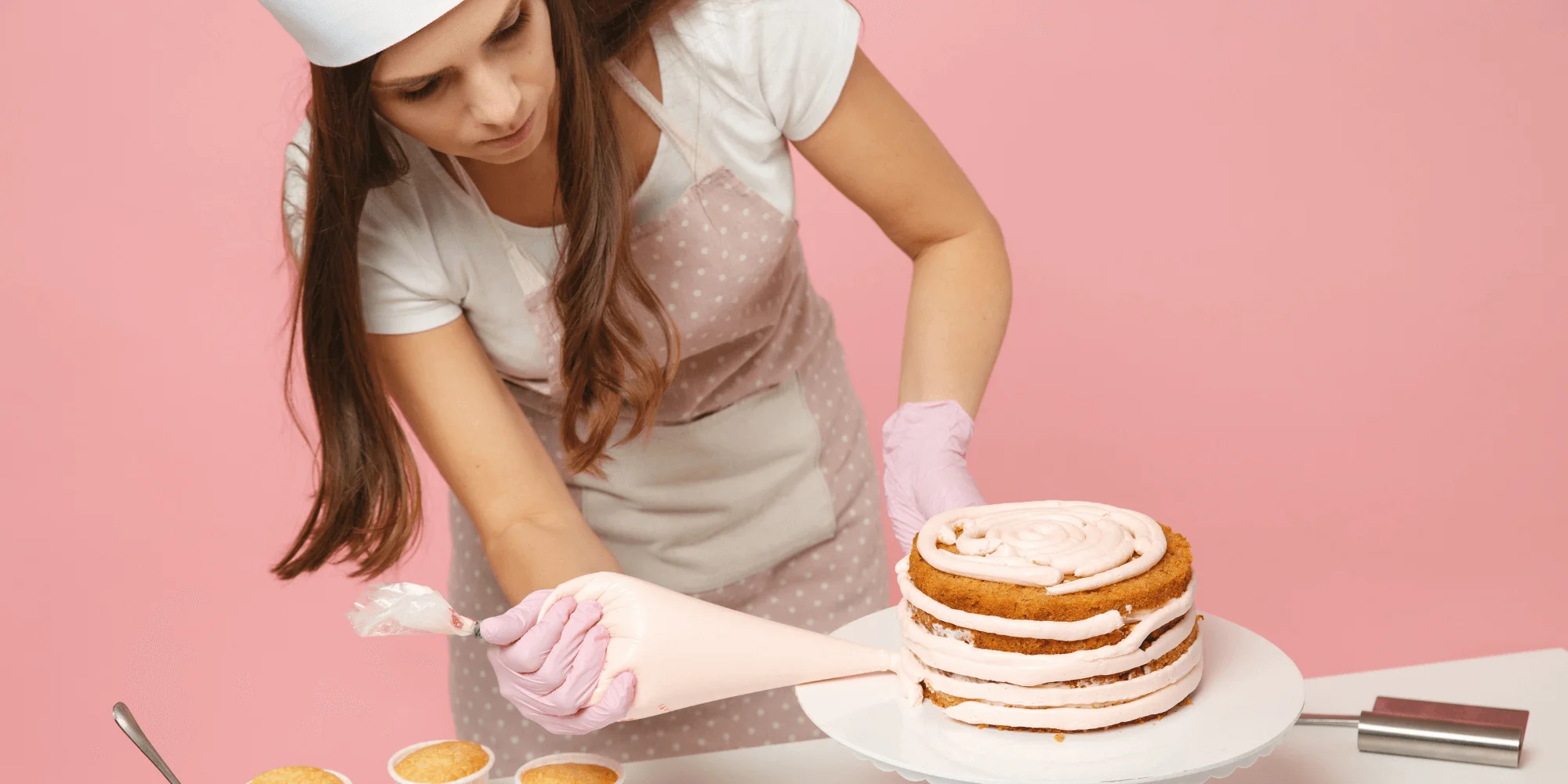The Art of Cake Design: Tips and Tricks for Creating Showstopping Masterpieces
published
October 2023topics
#Cake Decorating Tips
Welcome to the world of cake design, where creativity meets confectionery! Whether you're an aspiring baker looking to unlock your artistic potential or a seasoned cake decorator searching for new inspiration, this article will guide you through the art of cake design. From classic tiered cakes to whimsical sculpted creations, we'll explore the tips and tricks that will help you create showstopping masterpieces that will leave everyone in awe. Through the use of innovative techniques and a keen eye for detail, we'll delve into how to choose the perfect cake flavors, create stunning cake structures, and master the art of piping and fondant sculpting. Get ready to unleash your imagination and take your cake decorating skills to new heights. So grab your apron and prepare to embark on a sweet and artistic adventure into the world of cake design!
Essential Tools and Equipment for Cake Design
1. Cake pans: Invest in a variety of cake pans in different sizes and shapes to give you the flexibility to create different designs.It's best to use non-stick cookware for effortless release
2. Turntable: A turntable is a must-have tool for cake decorators. It allows you to easily rotate your cake while you work on it, ensuring even and smooth frosting application
3. Offset spatulas: These angled spatulas are perfect for spreading and smoothing frosting on the cake surface. Get a set of different sizes to handle different areas of your cake
4. Piping bags and tips: Piping bags are used for creating decorative details on cakes. Invest in a variety of piping tips to achieve different designs, such as stars, swirls, and borders
5. Palette knives: Palette knives are versatile tools that can be used for spreading frosting, creating texture, and smoothing edges. They come in different sizes and shapes to suit different tasks
6. Cake boards and dowels: For tiered cakes, you'll need sturdy cake boards and dowels to support the weight of the upper tiers. Make sure to choose food-safe materials
7. Edible decorations: Stock up on edible decorations like sprinkles, edible glitter, and edible flowers to add the finishing touches to your cake designs. Having these tools and equipment at your disposal will make the cake design process much smoother and more enjoyable. Now that you're equipped with the essentials, let's dive deeper into the world of cake design!
Understanding Different Cake Types and Flavors
- Butter cake: Butter cake is a classic choice that is rich, moist, and has a dense crumb. It pairs well with a variety of fillings and frostings, making it a versatile option for different designs
- Sponge cake: Sponge cake is light, airy, and has a delicate texture. It's perfect for layered cakes and can be soaked in flavored syrups to add moisture and flavor
- Chocolate cake: Chocolate cake is a crowd favorite and can be made in various forms, from moist and fudgy to light and fluffy. It's a great base for both classic and modern cake designs
- Red velvet cake: Red velvet cake is known for its vibrant red color and a hint of cocoa flavor. It has a velvety texture and pairs well with cream cheese frosting, making it a popular choice for special occasions
- Fruit cake: Fruit cakes are packed with dried fruits, nuts, and spices, making them dense and flavorful. They are often soaked in alcohol for an added kick of flavor
Cake Design Inspiration: Finding Ideas and Themes
1. Nature: Take a walk in nature and observe the colors, shapes, and patterns found in flowers, trees, and landscapes. Translate these elements into your cake designs for a natural and organic feel
2. Art and design: Explore different forms of art and design, such as paintings, sculptures, and architecture. Look for interesting shapes, colors, and textures that can be incorporated into your cake designs
3. Fashion and textiles: Fashion trends and fabric patterns can be great sources of inspiration. Look for interesting prints, textures, and color combinations that can be translated into edible art
4. Books and movies: Stories and characters from books and movies can inspire whimsical and imaginative cake designs. From fairy tales to superheroes, let your favorite stories come to life on your cakes
5. Personal experiences: Draw inspiration from personal experiences, hobbies, or meaningful moments. Create cakes that reflect your passions and tell a story.
Planning Your Cake Design: Sketching and Brainstorming
- Research: Gather reference images and materials that align with your chosen theme or inspiration. This will help you visualize your design and give you a starting point
- Sketch: Use pencil and paper or digital tools to sketch out your cake design. Focus on the overall shape, structure, and key elements you want to incorporate
- Color palette: Choose a color palette that complements your design. Consider the mood you want to convey and the theme of your cake
- Materials and techniques: Make a list of the materials and techniques you'll need to bring your design to life. This includes frosting, piping tips, fondant, and any other tools or ingredients
- Timeline: Create a timeline or schedule to ensure you have enough time to complete each step of the cake design process. This is especially important for complex designs or cakes with multiple tiers
By planning your cake design in advance, you'll have a clear vision of what you want to achieve and be better prepared for the execution. Now that you have your design plan ready, let's move on to the next step: choosing the right frosting and icing techniques.
Choosing the Right Frosting and Icing Techniques
1. Buttercream: Buttercream is a versatile frosting that can be flavored and colored in various ways. It's great for piping, creating textures, and achieving smooth finishes
2. Fondant: Fondant is a smooth, pliable icing that can be rolled out and draped over cakes for a flawless finish. It's perfect for achieving sharp edges and intricate designs
3. Ganache: Ganache is a mixture of chocolate and cream that results in a rich and glossy finish. It can be used as a frosting or poured over cakes for a smooth and decadent coating
4. Whipped cream: Whipped cream is light, airy, and adds a refreshing touch to cakes. It's best used for simple designs and is not suitable for intricate decorations
When choosing your frosting and icing, consider the taste, texture, and stability required for your design. Experiment with different flavors and techniques to find the perfect combination that enhances your cake design. With your frosting and icing chosen, it's time to move on to the exciting world of cake sculpting and carving!
Mastering Cake Sculpting and Carving
- Start with a sturdy base: Before you begin sculpting, make sure your cake is well chilled and firm. This will make it easier to shape and carve without crumbling
- Use a serrated knife: A serrated knife is perfect for carving cakes as it allows for precise cuts and smooth edges. Start by carving the basic shape and gradually refine it to achieve the desired design
- Layer and fill: When sculpting tiered cakes, it's important to layer and fill each tier before carving. This adds stability and ensures a consistent texture throughout the cake
- Crumble coat: Apply a thin layer of frosting known as a crumb coat to seal in the crumbs and create a smooth surface. This will make it easier to add the final layer of frosting or fondant
- Practice sculpting techniques: Experiment with different sculpting techniques such as stacking, carving, and shaping. Use reference images or templates to guide you in creating intricate designs
Working with Fondant: Tips and Tricks
1. Knead and roll: Before using fondant, knead it until it becomes soft and pliable. This will make rolling out and covering your cake easier
2. Rolling pin and measurements: Use a rolling pin to roll out the fondant to the desired thickness. Use measurements to ensure even thickness throughout
3. Cornstarch or powdered sugar: Dust your work surface with cornstarch or powdered sugar to prevent the fondant from sticking. Avoid using too much as it can dry out the fondant
4. Smooth and cover: Gently drape the rolled fondant over the cake and smooth it out with your hands or a fondant smoother. Start from the top and work your way down to avoid air bubbles
5. Trim and shape: Use a sharp knife or fondant trimmer to trim excess fondant and shape the edges of the cake. Smooth out any imperfections with your hands or a fondant smoother
6. Adding details: Fondant can be easily molded and shaped to create intricate details such as flowers, bows, and figurines. Use fondant tools and molds to enhance your design
Working with fondant requires precision and attention to detail. Practice rolling, covering, and shaping fondant on smaller projects before attempting larger and more complex designs. Now that you have a good grasp of fondant techniques, let's explore some decorating techniques to elevate your cake designs even further!
Decorating Techniques for Intricate Designs
- Piping: Piping is the art of creating decorative patterns, borders, and designs using a piping bag and different tips. Experiment with different piping techniques such as rosettes, shells, and lace patterns
- Stencil work: Stencils are a quick and easy way to add intricate designs to your cake. Use food-safe stencils and edible dusting powders to create beautiful patterns and textures
- Embossing: Embossing involves pressing a design or pattern into the cake surface using embossing tools or textured mats. This technique adds depth and texture to your cake designs
- Painting: Edible food coloring can be used to paint intricate designs on your cakes. Use fine-tipped brushes and a steady hand to create detailed and vibrant paintings
- Airbrushing: Airbrushing allows you to achieve smooth gradients, shadows, and highlights on your cakes. Invest in an airbrush kit and practice different techniques to master this skill
- Sugar flowers: Sugar flowers are delicate and realistic-looking decorations that can elevate your cake designs. Learn how to make different types of flowers using gum paste or fondant
Now, let's move on to the next step: adding finishing touches to your cake designs!
Cake design is a beautiful and creative art form that can be used to celebrate any occasion. It is a skill that can be learned and practiced, and there are endless possibilities for what can be created. Whether you are a beginner or a seasoned pro, cake design is a fun and rewarding hobby or career.
Some tips for creating beautiful cake design
- Choose the right cake for your design. The type of cake you choose will affect the design you can create. For example, a chocolate cake will be more difficult to work with than a white cake
- Use high-quality ingredients. This will make your cake taste better and look better
- Be patient. Cake design takes time and practice. Don't get discouraged if your first few cakes aren't perfect. All you need to do is keep practicing to get better
- Have fun! Cake design is a great way to express your creativity and have fun. So relax and enjoy the process
Adding Finishing Touches: Edible Decorations and Embellishments
1. Edible pearls and dragees: These small, round decorations add elegance and sophistication to your cakes. They can be used to create borders, patterns, or as accents
2. Edible gold or silver leaf: Gold or silver leaf adds a touch of luxury and glamour to your cake designs. Apply them to specific areas or create stunning metallic effects
3. Edible lace: Edible lace can be created using lace molds and edible lace mixtures. It adds a delicate and intricate touch to wedding cakes and other elegant designs
4. Edible sequins: Edible sequins are small, shiny decorations that can be applied to cakes to create a glamorous and eye-catching effect
5. Fresh flowers and fruits: Fresh flowers and fruits can be used to add a natural and vibrant touch to your cake designs. Make sure to choose food-safe flowers and fruits
Conclusion
A Few Topics to Consider
discover our blog
100+ Father’s Day Quotes, Instagram Captions, and Messages

Happy Valentine’s Day 2025: History, Quotes, Wishes, Instagram Captions & Gift Ideas

Happy Kiss Day 2025: Romantic Wishes, Quotes, Instagram Captions & Gift Ideas

